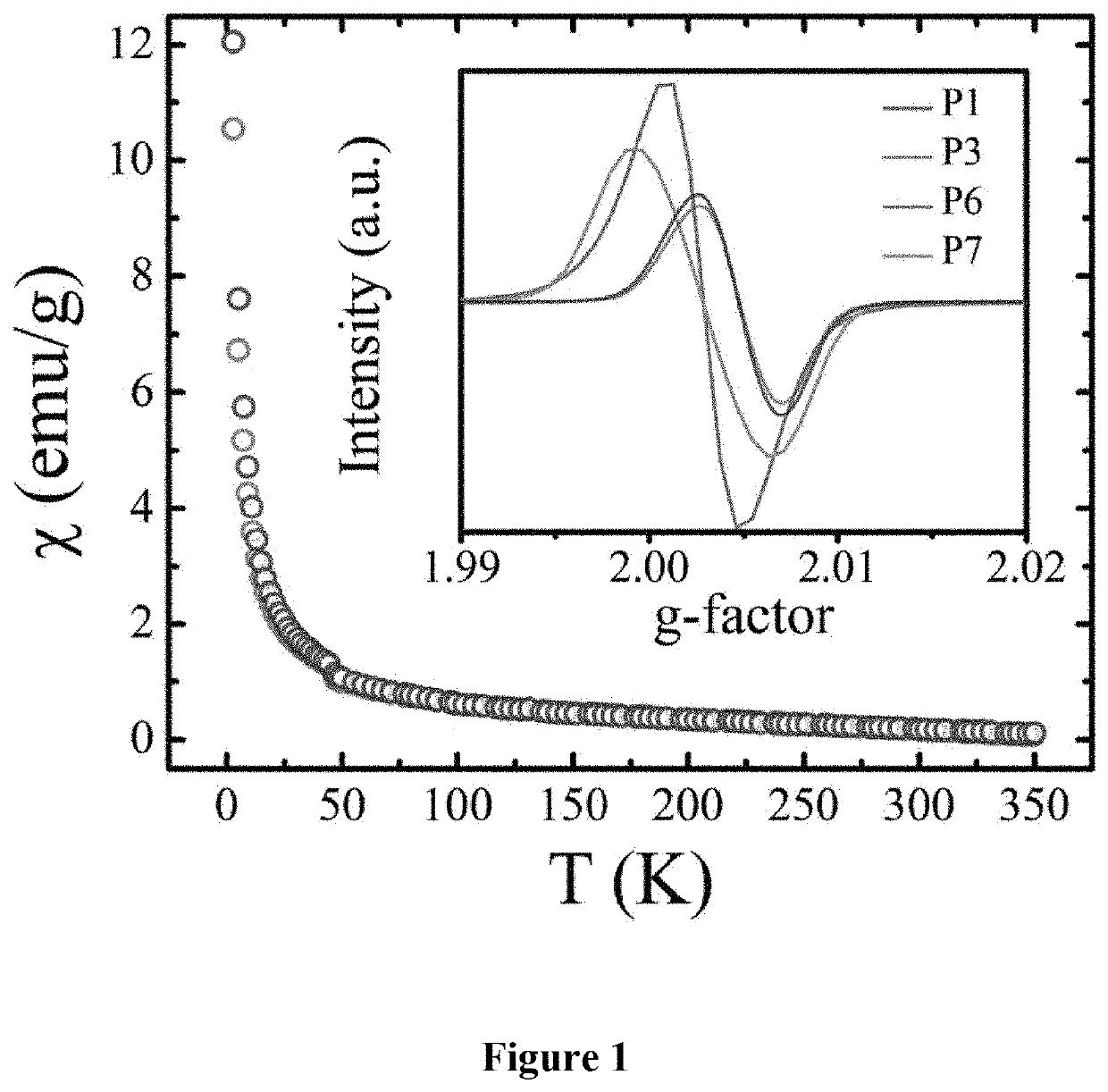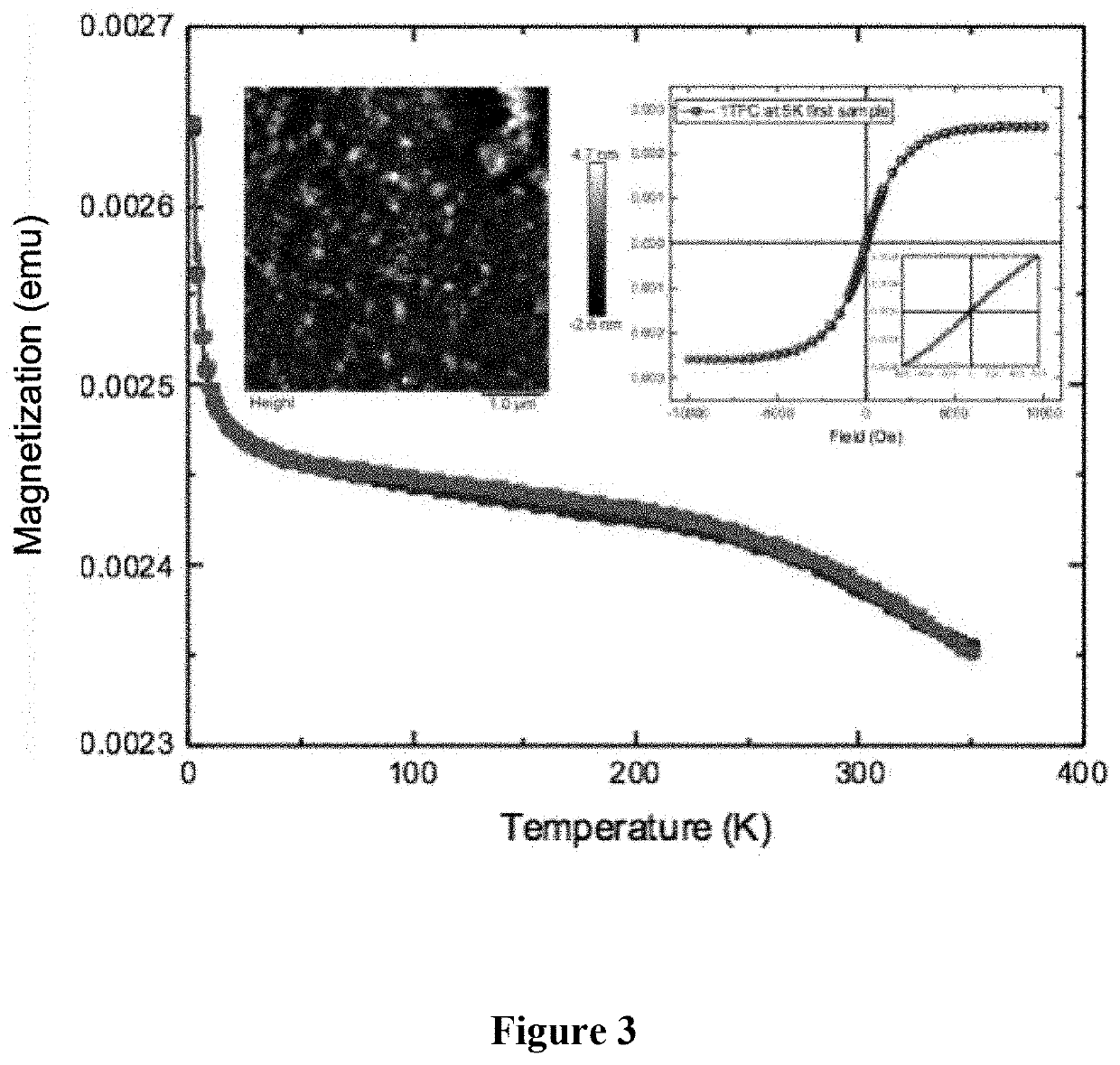Open-Shell Conjugated Polymer Conductors, Composites, and Compositions
a polymer conductor and open-shell technology, applied in the direction of conductors, electrically-conductive paints, coatings, etc., can solve the problems of reducing the overall environmental and thermodynamic stability, doping is a critical limiting factor in these material systems, and oscs have not yet revolutionized consumer electronics, etc., to achieve wide-range tunability, high intrinsic conductivity, and the effect of further modulation of electrical conductivity
- Summary
- Abstract
- Description
- Claims
- Application Information
AI Technical Summary
Benefits of technology
Problems solved by technology
Method used
Image
Examples
examples
[0080]Example 1. This example involved the exemplary structures of CPs (conjugated polymers): P1, P2, P3, P4, P5, P6, and P7 with different backbones and side chains. Pn represents their general D-A formula.
[0081]Example 2. This example involved the detailed material synthesis procedure for P1:
[0082]P1: A microwave tube was loaded with (4-(3,5-didodecylbenzylidene)-4H-cyclopenta[2,1-b:3,4-b′]dithiophene-2,6-diyl)bis(trimethylstannane) (150 mg, 0.162 mmol) and 4,9-dibromo-6,7-dimethyl-[1,2,5]thiadiazolo[3,4-g]quinoxaline (57.8 mg, 0.155 mmol). The tube was brought inside the glovebox, and 750 μL of a Pd(PPh3)4 / xylenes stock solution (3.5 mol %) was added. The tube was sealed and subjected to the following reaction conditions in a microwave reactor with stirring: 120° C. for 5 min, 140° C. for 5 min, and 170° C. for 30 min. After this time, the reaction was allowed to cool, leaving a solid gelled material. The mixture was precipitated into methanol and collected via filtration. The re...
PUM
| Property | Measurement | Unit |
|---|---|---|
| Time | aaaaa | aaaaa |
| Volume | aaaaa | aaaaa |
| Mass | aaaaa | aaaaa |
Abstract
Description
Claims
Application Information
 Login to View More
Login to View More - R&D
- Intellectual Property
- Life Sciences
- Materials
- Tech Scout
- Unparalleled Data Quality
- Higher Quality Content
- 60% Fewer Hallucinations
Browse by: Latest US Patents, China's latest patents, Technical Efficacy Thesaurus, Application Domain, Technology Topic, Popular Technical Reports.
© 2025 PatSnap. All rights reserved.Legal|Privacy policy|Modern Slavery Act Transparency Statement|Sitemap|About US| Contact US: help@patsnap.com



